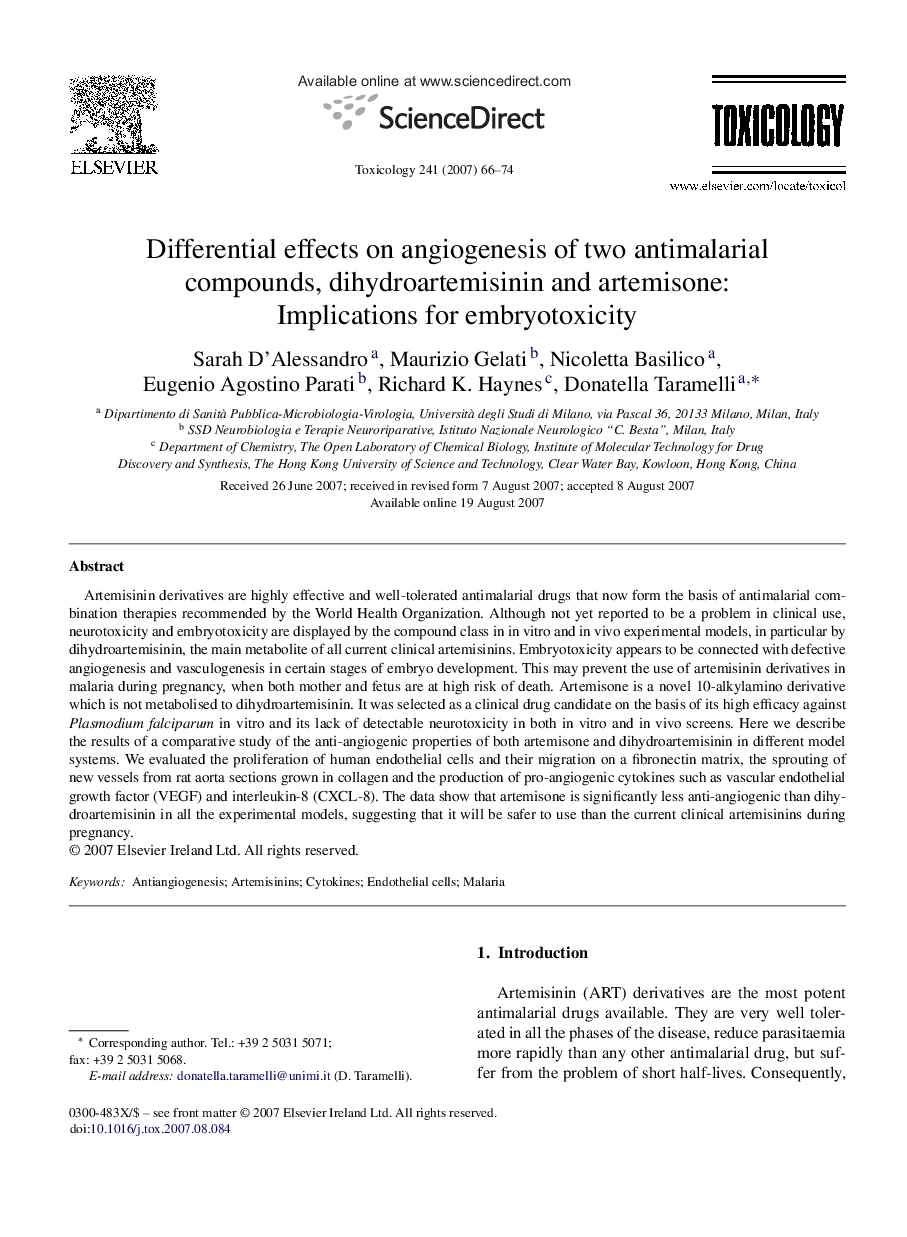| Article ID | Journal | Published Year | Pages | File Type |
|---|---|---|---|---|
| 2597493 | Toxicology | 2007 | 9 Pages |
Artemisinin derivatives are highly effective and well-tolerated antimalarial drugs that now form the basis of antimalarial combination therapies recommended by the World Health Organization. Although not yet reported to be a problem in clinical use, neurotoxicity and embryotoxicity are displayed by the compound class in in vitro and in vivo experimental models, in particular by dihydroartemisinin, the main metabolite of all current clinical artemisinins. Embryotoxicity appears to be connected with defective angiogenesis and vasculogenesis in certain stages of embryo development. This may prevent the use of artemisinin derivatives in malaria during pregnancy, when both mother and fetus are at high risk of death. Artemisone is a novel 10-alkylamino derivative which is not metabolised to dihydroartemisinin. It was selected as a clinical drug candidate on the basis of its high efficacy against Plasmodium falciparum in vitro and its lack of detectable neurotoxicity in both in vitro and in vivo screens. Here we describe the results of a comparative study of the anti-angiogenic properties of both artemisone and dihydroartemisinin in different model systems. We evaluated the proliferation of human endothelial cells and their migration on a fibronectin matrix, the sprouting of new vessels from rat aorta sections grown in collagen and the production of pro-angiogenic cytokines such as vascular endothelial growth factor (VEGF) and interleukin-8 (CXCL-8). The data show that artemisone is significantly less anti-angiogenic than dihydroartemisinin in all the experimental models, suggesting that it will be safer to use than the current clinical artemisinins during pregnancy.
